Spectaculaire trilogie de ventes d'art chinois chez Christie’s New York
Lot 480. An extraordinary yellow-ground green enameled ‘Dragon’ vase, Qianlong six-character incised sealmark and of the period (1736-1795) from a New England Collection; 12 in. (30.5 cm.) high, box. Estimate: $600,000-800,000). Price realised USD 1,762,500. © Christie's Images Ltd 2008.
NEW YORK.- On September 17, Christie’s New York will start its spectacular trilogy of Chinese Art sales with the single-owner sale Important Chinese Snuff Bottles from the J&J Collection, Part V followed by Fine Chinese Ceramics and Works of Art and an evening session will be devoted to Masterworks of Ancient and Imperial China, offering extraordinary works of art from various periods. The three sales of over 500 lots, include superb sculptures, bronzes, ceramics, jade objects and furniture, and are expected to realize in excess of $21,000,000.
Joe-Hynn Yang, Head of Christie’s Chinese Works of Art, New York, comments, “We are honored to present three exceptional sales for Christie's Asian Art Week this Fall. We are particularly pleased to offer a select group of 51 works, Masterworks of Ancient and Imperial China, which includes many pieces that are not only fresh to the field but also with exceptional provenance and publication history. The fifth installment of Important Chinese Snuff Bottles from the J&J Collection will include superbly crafted snuff bottles ranging from classic stylized motifs to traditional mythical symbols. Fine Chinese Ceramics & Works of Art offers magnificent works of art from all major dynasties in China and also features Property of the Ping Y. Tai Foundation. All three sales provide an excellent opportunity for collectors to acquire works from significant private collections.”
Important Chinese Snuff Bottles from the J&J Collection, Part V
10am
After the successful results of The J&J Collection Part IV in March 2007, which realized $2.9 million, Christie’s New York will present Part V on 17 September, offering 88 superb examples of this charming miniature art form from this well-established and exceptionally fine collection. Highlights include a very rare rose enamelled double-gourd glass bottle (estimate: $400,000-500,000), attributed to the Palace workshops in Beijing (1736-1780); an exceptional Imperial Beijing enamel snuff bottle decorated with a woman and child (left image on page one- estimate: $220,000-300,000) and an exquisite and unusual jade pebble snuff bottle of the Suzhou School (1680-1780) (estimate: $90,000-120,000).
Fine Chinese Ceramics and Works of Art
11am & 2:30pm
Christie’s New York continues the day with Fine Chinese Ceramics and Works of Art in two sale sessions. The sale features over 350 objects of Chinese art from different periods, styles and techniques as well as a fine group of ceramics and bronzes from the Property of the Ping Y. Tai Foundation.
Property of the Ping Y. Tai Foundation will offer a selection of 35 archaic bronzes and ceramics which date from the Shang Dynasty (c.1600 to 1100 BC) through the 20th century. The exceptional lot from the Ping Y. Tai Foundation is the extremely rare Early Ming "sweet white" vase, Meiping, Yongle period (1403-1425) (estimate: $600,000-800,000).
Lot 245. A very rare early Ming tianbai glazed anhua decorated meiping Yongle period (1403-1425); 12 5/8 in. (32.4 cm.) high. Estimate $600,000 - $800,000. Price Realized $2,770,500. © Christie's Images Ltd 2008.
Cf. my post: A very rare early Ming tianbai-glazed anhua-decorated meiping, Yongle period (1403-1425)
Leading the rest of the sale is an extraordinary yellow-ground green enameled ‘Dragon’ vase from a New England Collection ($600,000-800,000). The vase, one of the fewer than six vases known worldwide, has the distinctive Qianlong six-character sealmark (1736-1795) and is executed in rich color tones featuring a lively fiveclawed dragon, enameled in emerald-green and egg-yolk yellow colors.
Lot 480. An extraordinary yellow-ground green enameled ‘Dragon’ vase, Qianlong six-character incised sealmark and of the period (1736-1795) from a New England Collection; 12 in. (30.5 cm.) high, box. Estimate: $600,000-800,000). Price realised USD 1,762,500. © Christie's Images Ltd 2008.
The slim baluster body finely engraved with a single, lively, scaly five-clawed dragon, enameled in emerald-green on the translucent egg yolk-yellow ground, striding above a border of swirling and breaking waves, enameled in two contrasting tones of green, the trumpet neck detailed with scrolling ruyi clouds on either side between a pair of tubular handles with narrow borders of key fret, the splayed foot pierced with two horizontal slots, the nianhao incised on the base which is also covered with a yellow glaze.
Note: The combination of yellow and green for the decoration of the whole surface of porcelain vessels appeared at the imperial kilns at Jingdezhen during the early 15th century. Excavations at Zhushan have revealed dishes from the Xuande (AD 1425-36) stratum which have a yellow ground, against which are shown green dragons amongst clouds. See Xuande Imperial Porcelain Excavated at Jingdezhen, Chang Foundation, Taipei, 1998, p. 78, no. 73. In fact these Xuande dishes are not only important for their coloration, but also for the fact that the colors are separated by fine relief lines in fahua style. On the current vase, however, the colors are separated by incised lines, which also provide the details on some of the motifs. The combination of green and yellow, both glaze/enamel colors which were low-firing and thus had to be applied after the initial porcelain firing, remained a favorite with the Chinese court throughout the Ming and Qing dynasties, even becoming part of the sumptuary laws. The current vase is unusual in that two greens, rather than one, are used to excellent effect within the decoration against the rich yellow ground.
The inspiration of the form of the current vase probably originally came from archaic bronze hu-shaped vessels, particularly those dated to the Western Zhou period (1100-771 BC) cast with a pair of pierced slots above the splayed foot. An example of this type is a wine vessel dated to the mid-Western Zhou period, which was excavated in 1975 from Baijiacun in Shaanxi province and is illustrated in Zhongguo Wenwu Jinghua Dacidian - Qingtong juan, Shanghai, 1995, p. 134, no. 464. A somewhat broader, lobed, ceramic version of the shape also appears amongst Song dynasty Guanwares, such as the vase in the National Palace Museum illustrated in Catalogue of the Special Exhibition of Sung Dynasty Kuan Ware, National Palace Museum, Taipei, 1989, no. 54. However, the current ceramic shape can also be seen as a slightly exaggerated version of the classic ganlan or olive shape, exemplified by a Qianlong famille rose vase in the National Palace Museum illustrated in Catalogue of the Special Exhibition of K'ang-Hsi, Yung-cheng and Ch'ien-lung Porelain Ware From the Ch'ing Dynasty in the National Palace Museum, Taipei, 1986, no. 117.
The more attenuated form, closer to the current vessel, with more distinctly flaring foot and mouth is also seen among Qing imperial porcelain vases without handles. A Yongzheng example with blue and white decoration in the collection of the Palace Museum, Beijing, is illustrated in The Complete Collection of Treasures of the Palace Museum - 36 - Blue and White Porcelain with Underglaze Red (III), Hong Kong, 2000, p. 93, no. 79. A Yongzheng monochrome copper-red glazed vase of the same form in the collection of the Palace Museum, Beijing, is illustrated in Qingdai Yuyao ciqi, juan 1, Beijing, 2005, pp. 38-9, no. 9. Another of the same shape, but with an imitation Guan glaze, also in the Palace Museum collection is illustrated ibid., pp. 342-3, no. 157. A vase of the same shape, colors, and with the same design as the current vessel, is in the Beijing Palace Museum Collection (Fig.1), illustrated in Selected Porcelain of the Flourishing Qing Dynasty at the Palace Museum, Beijing, 1994, p. 349, no. 85.
Powerful depictions of dragons above waves were popular on imperial porcelain throughout the 18th century. This motif shows the dragon, and thus the emperor, in his most beneficent guise, for it represents the dragon rising from winter hibernation at the spring equinox in order to bring rain and thus ensure a good harvest for all the people of the Empire. A vase with underglaze blue and overglaze rouge red enamel decoration, on which are depicted nine dragons above waves is in the collection of the Palace Museum, Beijing, and illustrated in The Complete Collection of Treasures of the Palace Museum - 36 - Blue and White Porcelain with Underglaze Red (III), op. cit., p. 252, no. 230. The Beijing blue and red vase shows a similar approach to the depiction of the waves to that seen on the current green and yellow vase.
The current vase is very similar to a pair of vases sold at Christie's, London, 25 November 1974, lot 212, which were sold again at Sotheby's Hong Kong, 29 November 1976, lot 579. One vase from this pair was subsequently sold at Christie's, Hong Kong, 27 May 2008, lot 1595.
Also with the Qianlong six-character seal mark is a cloisonné enamel tripod censer and cover (right image on page 1- estimate: $120,000-150,000). This large imperial incense burner is particulary noteworthy with its delicate design of gilt-copper lion masks, large and small flowers and for bearing the mark of the Qianlong Emperor.
Lot 190. A rare large cloisonné enamel tripod censer and cover, Qianlong six-character mark inscribed in a line and of the period (1736-1795);16 in. (40.7 cm.) high. Estimate USD 120,000 - USD 150,000. Price realised USD 170,500. © Christie's Images Ltd 2008.
The compressed globular body raised on three cabriole legs issuing from gilt-copper lion masks and decorated with lotus scroll bearing blossoms surrounded by the wufu, above a band of small flowers and a large flower head on the base, with bands of foliate sprays on the neck, pierced upright handles, and upright rim, which is applied with a rectangular panel inscribed with the reign mark, the cover en suite and pierced with the Eight Trigrams below a globular knop pierced with a dragon amidst clouds, wood stand.
Sculpture plays an important part in the sales this season, with rare limestone and bronze examples made with extraordinary craftsmanship. Of distinct note is gilt-bronze model of a pagoda, from Yunnan, Dali Kingdom (12-13th Century) (estimate: $120,000-150,000). It is a striking twelve-story pagoda with a figure of a seated Buddha positioned between the four guardian figures representing the Four Heavenly Kings.
A very rare gilt-bronze model of a pagoda. Dali Kingdom, Yunnan Province, 12-13th century. © Christie's Images Ltd 2008.
Two limestone items from the Tang Dynasty (618-907) include a very dark grey limestone relief carving of Lokapala - a powerful, muscular guardian (estimate: $40,000-60,000), and a limestone head of Buddha possibly from the Longmen Caves (estimate: $30,000-50,000).
A very rare dark grey lmestone relief carving of a lokapala. Tang dynasty (618-907). © Christie's Images Ltd 2008.
Lot 375. A rare lmestine head of Buddha. Tang dynasty, early 8th century, possibly Longmen caves; 11 in. (28 cm.) high. Estimate USD 30,000 - USD 50,000. Price realised USD 62,500. © Christie's Images Ltd 2008.
The long face carved with serene expression, with crisply carved mouth and nose whose edges continue up into the well-defined brows gracefully arched above the equally well-carved eyes, the hair dressed in tight spiralled curls that also cover the prominent usnisa, the fine-grained grey stone with traces of pigment, the back of the head inscribed in black with the number NR1814 above three Japanese characters, the number repeated under the right ear, and another number, 1291, written on the back of the neck, stand.
Note: While certainly of Henan-type, stylistically this head compares well with other heads of similar date now in public and private collections that are identified as being originally from the Longmen Caves site. The hard, dark grey limestone, the carving of the facial features, especially the small pursed mouth, obliquely cut eyes and curved brows, the shape of the face with its full cheeks and small rounded double chin are features seen in all of these heads.
As the Manheim head is carved almost completely in the round, with only a small unfinished area to the nape of the neck, it is most likely not removed from a figure integral to the rock wall, but rather from the one of the separate Buddhas seated on isolated plinths within the cave-temple space. These figures, usually found alone or in triad groups, are more finely finished and carved from finer-grained distinct blocks of limestone, which would correspond with the exquisite quality and sensuousness of the present head. Compare a larger head in a Japanese collection, exhibited at the Osaka Municipal Museum of Art, Chinese Buddhist Stone Sculpture. Veneration of the Sublime, 1995, cat. no. 57, and illustrated by Sun Di, ed., Comprehensive Illustrated Catalogue of Chinese Buddhist Sculptures in Overseas Collections, vol. 5, Beijing, 2005, p. 1003, with almost identical proportions of the narrow head, high usnisa, deeply carved eyes and bud mouth.
Complete seated figures of Buddha in the round were developed during the peak phase of sculptural development at the Longmen grottoes under the sponsorship of Empress Wu Zetian in the second-half of the eighth century, such as the famous Fengxian Temple and the group of impressive Leigutai Caves, whose figures are executed with the same exquisite precision and plump femininity as the Manheim head. See Zhongguo Meishu Quanji, Diaosu - 11 - Longmen Shiku Diaoke, Beijing, 1988, figs. 193, 195, and 196. In 1925, Osvald Sirén illustrates three such isolated figures within the Xiang Shan cave-temple complex on the opposite side of the river from the main caves at Longmen. See O. Sirén, Chinese Sculpture from the Fifth to the Fourteenth Century, vol. II, (1998 reprint), pl. 462.
A very similar head can be seen on a seated figure of Buddha dated to the Tang dynasty excavated from the Fengxiansi Temple site, and now in the Longmen Caves Research Institute, illustrated in Ryumon sekkutsu(Longmen Caves), Miho Museum, Kyoto, 2001, pp. 84-5, no. 43.
A centerpiece of the furniture section is an imperial zitan incense stand, Fangxiangji, of the 18th Century (estimate: $150,000-180,000). The purple-toned stand is beautifully carved along the edges with floral scroll and lotus petals throughout the body and legs. Zitan is an extremely rare and expensive wood and it is prized for its hard, dense, and tight-grained quality.
A rere imperial zitan incense stand, Fangxiangji, 18th-19th century. © Christie's Images Ltd 2008.
The sale also features an exceptionally rare blue and white moonflask with the Yongzheng six-character seal mark (1723-1736) (estimate: $300,000-400,000). The unusual moonflask shape is well painted in early Ming style along with a gorgeous design of three fruiting and flowering branches.
A rare blue and white moon flask. Yongzhen six-character seal mark in underglaze blue and of the period. © Christie's Images Ltd 2008.
Also, a fine pair of white jade bowls of the 18th century (estimate: $120,000-150,000) present an example of the meticulous selection of highly transparent, even, and flawless white jade. With recent heightened interest in white jade, this fine pair should attract keen bidding, particularly given their provenance from a French private collection circa 1990s.
Lot 330. A fine pair of white jade bowls, 18th century; 4 7/8 in. (12.5 cm.) diam. Estimate USD 120,000 - USD 150,000. Price realised USD 170,500. © Christie's Images Ltd 2008.
With deep sides flaring towards the rim and raised on a thickly cut foot, the well-polished stone of even tone with some white inclusions.
Provenance: Collection Cottreau, Paris, 1910.
Note: Compare the 18th century white jade bowl illustrated by M. Knight et. al., in Later Chinese Jades: Ming Dynasty to Early Twentieth Century, Asian Art Museum of San Francisco, 2007, p. 129, no. 113, where the authors note that the thin walls of the vessel highlight the translucence of the material and the purity of its color, two characteristics shared with its porcelain prototypes. See, also, a similar greenish-white jade bowl dated to the 18th century in the Museum of East Asian Art, Bath, illustrated by A. Forsyth and B. McElney in Jades from China, The Museum of East Asian Art, 1994, p. 405, no. 340.
Two pairs of white jade bowls of slightly larger size were sold in our Hong Kong rooms. The first pair, dated to the Qianlong period, with similar, slightly everted edge, was sold 30 October 2000, lot 651; the other pair of 18th century date was sold 26 April 2004, lot 1116.
Masterworks of Ancient and Imperial China
6:30pm
The day will conclude with an evening session of 51 outstanding lots, Masterworks of Ancient and Imperial China, which offers archaic bronzes, exceptional jades, and stone sculptures, and is expected to realize in excess of $8 million.
Highlighting the archaic bronzes section is an exquisite bronze ritual wine vessel, Zun, Shang Dynasty, 14-13th Century BC (estimate: $500,000-700,000). This Zun is a fine example of its type, with elegant proportions and a unified decorative scheme.
An important and rare bronze ritual wine vessel, zun. Early Shang Dynasty, Zhengzhou phase, 14-13ème siècle avant JC. © Christie's Images Ltd 2008.
Unusual and intriguing is a magnificent painted bronze goose-form lamp, western Han Dynasty, 2nd Century BC (estimate: $400,000-600,000). “Smokeless” lamps such as this one were supported within the outer depression of the oil holder with a short central pricket that opens into the back of the goose. Smoke would have risen up the goose’s head through the neck and into cool water held in the body.
A magnificent painted bronze goose-form lamp, Western Han Dynasty, 2nd Century BC. © Christie's Images Ltd 2008.
The auction also features a strong group of jades from several private collections, such as Property from the Collection of Mr. and Mrs. Paul E. Manheim and an Important Asian Collection including a rare and important pair of imperial white jade boxes and covers, Qianlong period (1736-1795) (estimate: $800,000-1,200,000). The covers are finely carved with large flower heads and the boxes are raised on enameled gilt bronze stands formed by six stylized dragons on the end.
A rare and important pair of imperial white jade boxes and covers, Qianlong period (1736-1795). © Christie's Images Ltd 2008.
Equally distinctive is a magnificent imperial white jade table screen, Qianlong Period (1736-1795) (estimate: $500,000-700,000). The rectangular panel is carved with great detail in high relief, of a scholar set in the mountains by a lake and a large gnarled pine tree, all beneath an incised imperial poem.
A magnificent imperial white jade table screen, Qianlong Period (1736-1795). © Christie's Images Ltd 2008.
In the stone sculpture section, the sale boasts sculptures from famous caves such as Yungang and Tianlongshan. A beautiful highlight of this group is a magnificent sandstone head of Buddha of the Yungang caves, Shanxi Province, Northern Wei Dynasty (386-534) (estimate: $250,000-350,000). With a well carved face detailing a dimpled chin and a gentle smile, it was exhibited by Yamanaka & Company in Osaka, Japan, as early as 1934.
A magnificent sandstone head of Buddha of the Yungang caves, Shanxi Province, Northern Wei Dynasty (386-534). © Christie's Images Ltd 2008.
A rare and important sandstone head of Buddha, Northern Qi Dynasty (549-577), from the Tianlongshan Caves of Shanxi Province (estimate: $200,000-300,000) can be traced back to its original location in the west wall of cave 10, and has an impressive provenance. It was sold from Yamanaka & Company in New York in 1943, and has been in the famous collection of Walter and Molly Bareiss, Connecticut, since the 1960s.
A rare and important sandstone head of Buddha, Northern Qi Dynasty (549-577). © Christie's Images Ltd 2008.
An outstanding Cizhou green-glazed painted baluster vase is a testament to the craftsmanship of the potters during the Song/Jin Dynasty, 12th Century (estimate: $600,000-800,000). The shape, richness of the green glaze, and the decorative scheme of two leafy peony sprays with incised details all add to its overall beauty. It was formerly in a private Japanese collection since the 1980s.
An outstanding Cizhou green-glazed painted baluster vase, Song-Jin Dynasty, 12th Century. © Christie's Images Ltd 2008.
An important and very significant pair of imperial bronze altar vases provides an example of the outstanding quality achieved at the Imperial Foundry Workshops, Zaobanchu, in Beijing, during the Qianlong reign (549-577) (estimate: $500,000-700,000). Each vase is very heavily and crisply cast in relief with a dense pattern of archaizing dragons.
An important and very significant pair of imperial bronze altar vases. Qianlong six-character cast marks in a line within a panel and of the period (1736-1795). © Christie's Images Ltd 2008.
The sale also features an important and unique large gilt-copper dragon plague of the Liao dynasty (907-1125) (estimate: $250,000-350,000). The powerful yet elegant dragon is cast with a roaring open mouth, a pair of sweptback horns, a windblown mane, and short spines along the backbone leading to the long tail, and may represent the Green Dragon of the East.
An important and unique large gilt-copper dragon plague of the Liao dynasty (907-1125). © Christie's Images Ltd 2008.

/https%3A%2F%2Fprofilepics.canalblog.com%2Fprofilepics%2F1%2F0%2F100183.jpg)
/https%3A%2F%2Fstorage.canalblog.com%2F03%2F02%2F119589%2F96711876_o.jpg)
/https%3A%2F%2Fstorage.canalblog.com%2F11%2F31%2F119589%2F94773502_o.jpg)
/https%3A%2F%2Fstorage.canalblog.com%2F20%2F83%2F119589%2F94772815_o.jpg)
/https%3A%2F%2Fstorage.canalblog.com%2F26%2F72%2F119589%2F75604929_o.jpg)
/https%3A%2F%2Fstorage.canalblog.com%2F59%2F60%2F119589%2F26458628_o.jpg)
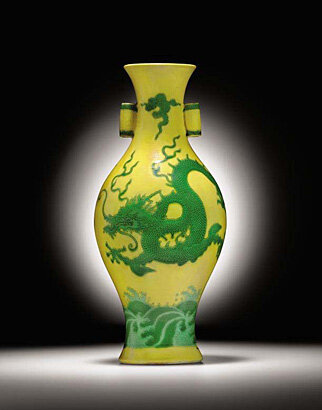

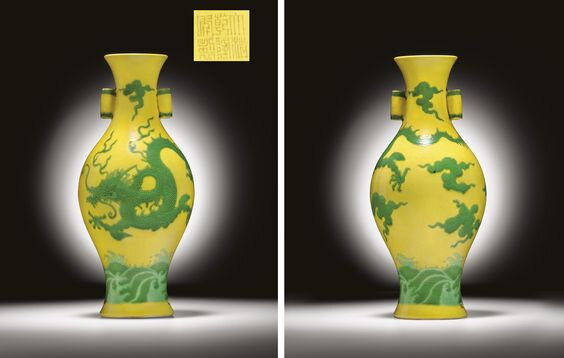



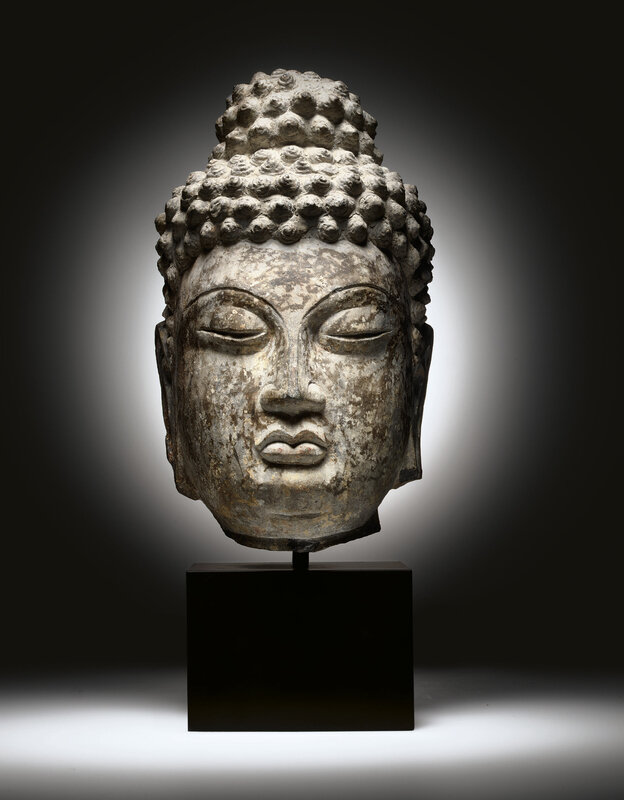
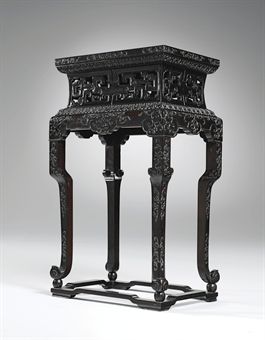

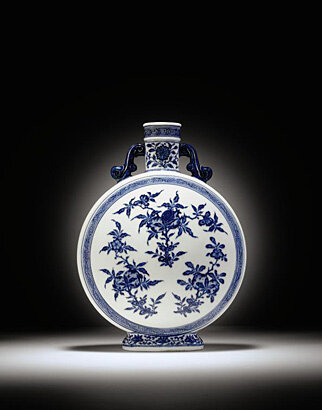

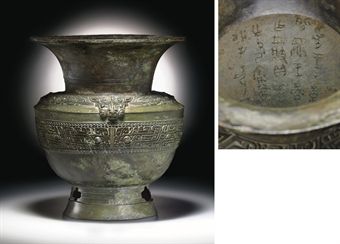



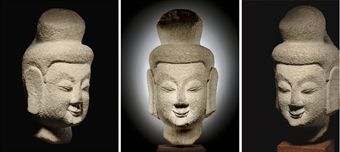

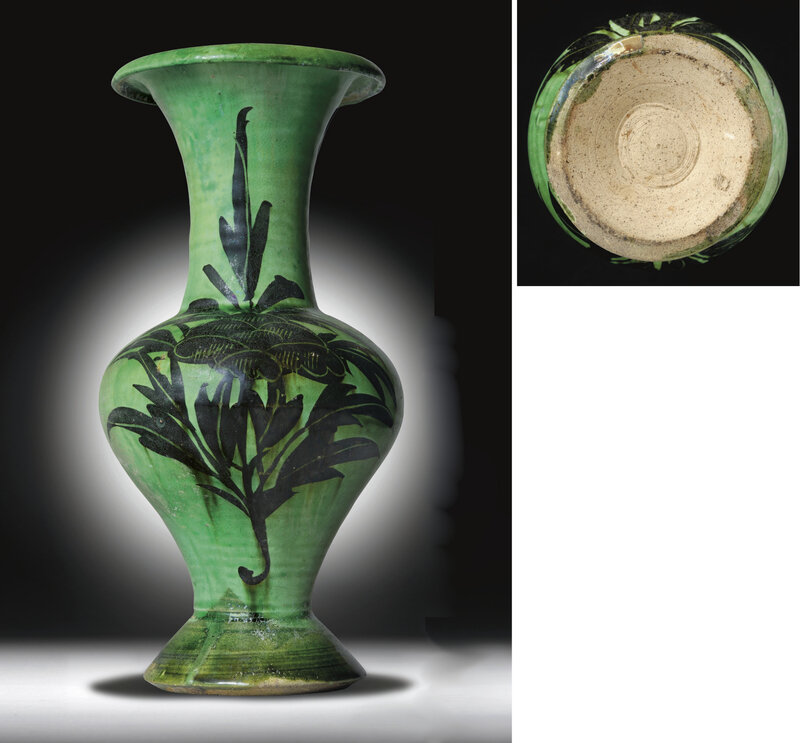
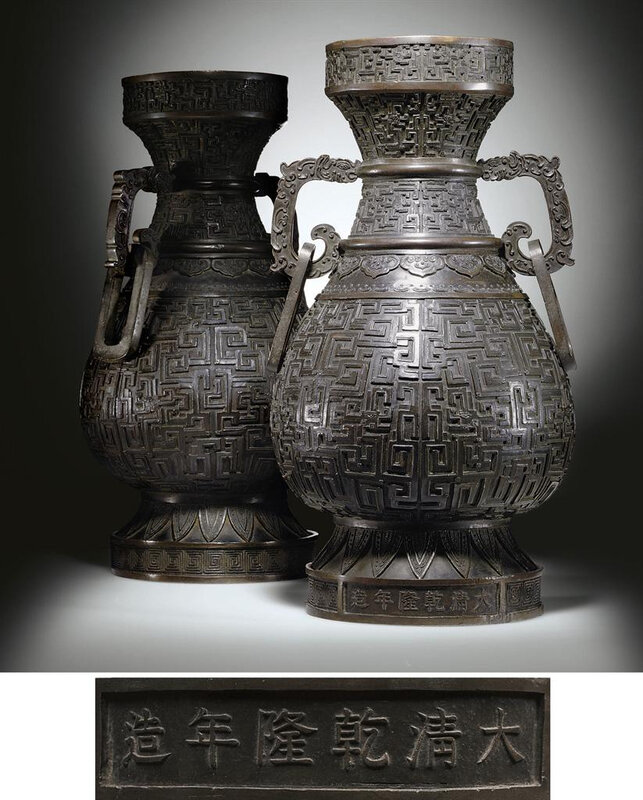



/http%3A%2F%2Fstorage.canalblog.com%2F87%2F14%2F119589%2F96516259_o.jpg)
/http%3A%2F%2Fstorage.canalblog.com%2F64%2F74%2F119589%2F75058468_o.jpg)
/http%3A%2F%2Fstorage.canalblog.com%2F04%2F39%2F119589%2F74963459_o.jpg)
/http%3A%2F%2Fstorage.canalblog.com%2F46%2F65%2F119589%2F74511647_o.jpg)